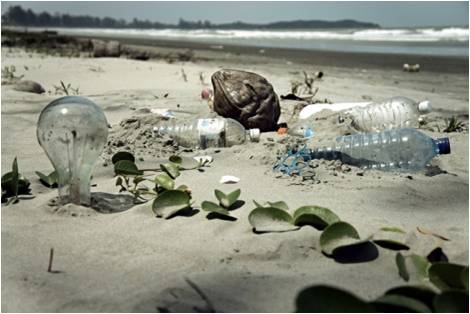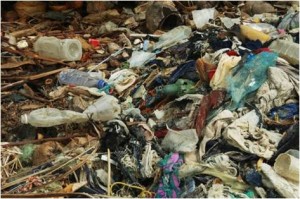
Using Engineering to Clean Up the World’s Oceans
Large-scale environmental issues like global warming and pollution often seem too impossible and daunting to solve. But after a diving excursion in Greece three years ago, a teenager from the Netherlands began using engineering principles to devise a plan to clean up the world’s ocean pollution.

His name is Boyan Slat, and he’s the founder and president of The Ocean Cleanup, an organization committed to environmentally friendly, large-scale and efficient removal of plastic pollution from aquatic ecosystems. Some areas of the ocean contain more plastic waste than fish, which a kills millions of seabirds and marine mammals each year and the toxic chemicals endanger human health as well. According to a report by produced by the Plastic Disclosure Project and supported by the United Nations Environmental Programme, conservative estimates of the overall financial damage of plastics to marine ecosystems stands at $13 billion each year.
How It Works
Slat’s plan is to clean up at least half of the Pacific Garbage Patch in the next decade, using ocean currents to his advantage. “The idea was simple,” Slat wrote in a blog post. “I wondered; why move through the oceans, if the oceans can move through you?”
Over 100 engineers, oceanographers, ecologists, finance professionals, maritime lawyers, and recycling experts have been conducting research, designing models, and raising awareness about this promising innovation. The results of the Ocean Cleanup’s feasibility study were released in June 2014. To reduce wave-induced forces, engineers developed a boom design that separates the tension-carrying cable and the boom, allowing it to move with the motion of the waves.
Researchers tested this concept near the Azores with a 40-meter-long boom that successfully captured and concentrated plastic pollution. The structures that engineers have designed would cover millions of square kilometers. By using this method instead of nets, the current and marine life flow underneath these structures, preventing all potential wildlife entanglement.
Efficiency and Sustainability
According to Computational Fluid Dynamics simulations, at least 80-percent of plastics encountering the booms will be captured. Researchers concluded that the booms can operate in 95-percent of weather conditions, and that this process is 33 times less expensive than conventional cleanup methods. Some plankton will likely be destroyed by the booms, scientists concluded that it would take less than seven seconds per year for it to regenerate.
The Ocean Cleanup is committed to reusing ocean plastic as much as possible. After conducting tests along the Hawaiian shoreline, researchers discovered that much of this plastic can be turned into oil and other new materials through mechanical recycling.
Looking Ahead
To keep costs low, the organization is trying to raise $2 million in 100 days to execute more pilot tests, study the durability of the system, developand deploy permanent sampling equipment in the gyre, optimize vertical distribution research and to further develop and build the team. “It wouldn’t be very cost-efficient to try to build our own engineering company and oceanographic institute, Slat said. “Instead, we seek collaborations with existing parties, enabling us to focus on the bigger picture”. The goal is to establish a large-scale operation within 3-4 years.

To learn more about Boyan Slat’s plan, check out The Ocean Cleanup’s Executive Summary and the blog. To get involved, consider supporting The Ocean Cleanup’s Crowd Funding Campaign or joining the Ocean Cleanup Team.
*Photo credits: epSos .de and urbangarden via Flickr



